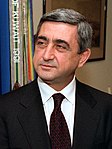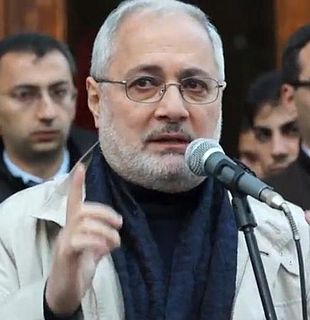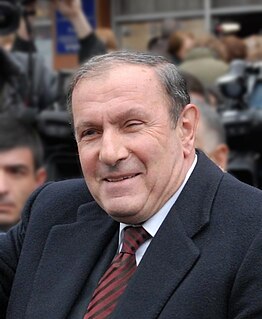| |||||||||||||||||||||
| |||||||||||||||||||||
 | |||||||||||||||||||||
| |||||||||||||||||||||
Presidential elections were held in Armenia on 19 February 2008. Prime Minister Serzh Sargsyan was elected in the first round according to official results, but this was disputed by former President Levon Ter-Petrosyan, who was officially placed second.

Armenia, officially the Republic of Armenia, is a country in the South Caucasus region of Eurasia. Located in Western Asia on the Armenian Highlands, it is bordered by Turkey to the west, Georgia to the north, the de facto independent Republic of Artsakh and Azerbaijan to the east, and Iran and Azerbaijan's exclave of Nakhchivan to the south.
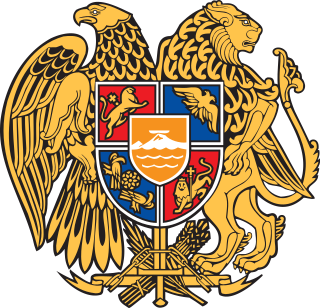
The Prime Minister of Armenia is the head of government and most senior minister within the Armenian government, and is required by the constitution to "determine the main directions of policy of the Government, manage the activities of the Government and coordinate the work of the members of the Government." Also, according to the constitution, the Prime Minister heads the Security Council, which prescribes the main directions of the country's defense policy; thus, the Prime Minister is effectively the commander-in-chief of the Armed Forces of Armenia.. Under the new 2015 constitution, the Prime Minister is the most powerful and influential person in Armenian politics. The Prime Minister is appointed by the President of Armenia upon the vote of the National Assembly. The Prime Minister can be removed by a vote of no confidence in Parliament. In the constitutional referendum held in 2015, citizens voted in favor of transferring Armenia into a parliamentary republic.

Serzh Sargsyan is an Armenian politician who served twice as the Prime Minister of Armenia and was the third President of Armenia, from 2008 to 2018. He won the February 2008 presidential election with the backing of the ruling Republican Party of Armenia, a party in which he serves as chairman, and took office in April 2008. On 18 February 2013, he was re-elected as president and served the entire term.
Contents
The candidacy of Sargsyan was backed by incumbent President of Armenia Robert Kocharyan, [1] who was ineligible to stand for a third consecutive term. [2] Other candidates included Levon Ter-Petrosyan and Vahan Hovhannisyan, the Vice President of the National Assembly, representing the Armenian Revolutionary Federation. [3] [4] The largest opposition party, Rule of Law, nominated former parliamentary speaker Artur Baghdasarian as its candidate. [5]
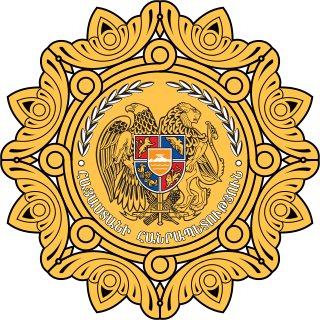
The President of Armenia is the head of state and the guarantor of independence and territorial integrity of Armenia elected to a single seven year term by the National Assembly of Armenia. Under Armenia's parliamentary system, the President is simply a figurehead and holds ceremonial duties, with most of the political power vested in the Parliament and Prime Minister.

Robert Kocharyan is an Armenian politician who served as the second President of Armenia between 1998 and 2008. He was previously President of Nagorno-Karabakh from 1994 to 1997 and Prime Minister of Armenia from 1997 to 1998. He was arrested on December 7, 2018.

Levon Hakobi Ter-Petrosyan, also known by his initials LTP, is an Armenian politician. He was the first President of Armenia from 1991 to 1998. A senior researcher at the Matenadaran Institute of Ancient Manuscripts, he led the Karabakh movement for the unification of the Armenian-populated Nagorno-Karabakh with Armenia in 1988. After Armenia's independence from the Soviet Union in 1991, Ter-Petrosyan was elected president in October 1991 with overwhelming public support. He led the country through the Nagorno-Karabakh War with neighboring Azerbaijan, during which Armenia supported the Republic of Artsakh in fighting against Azerbaijan.
